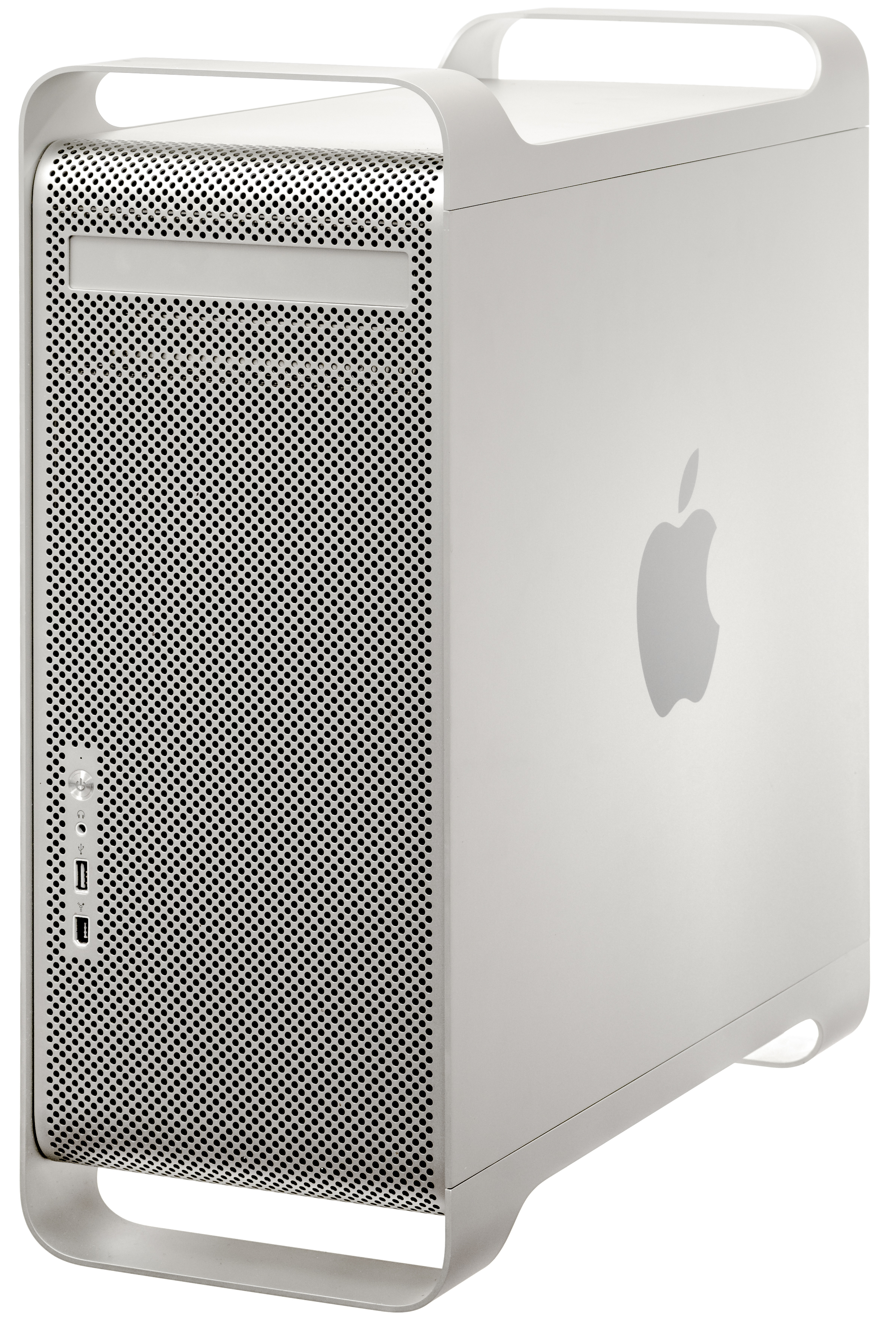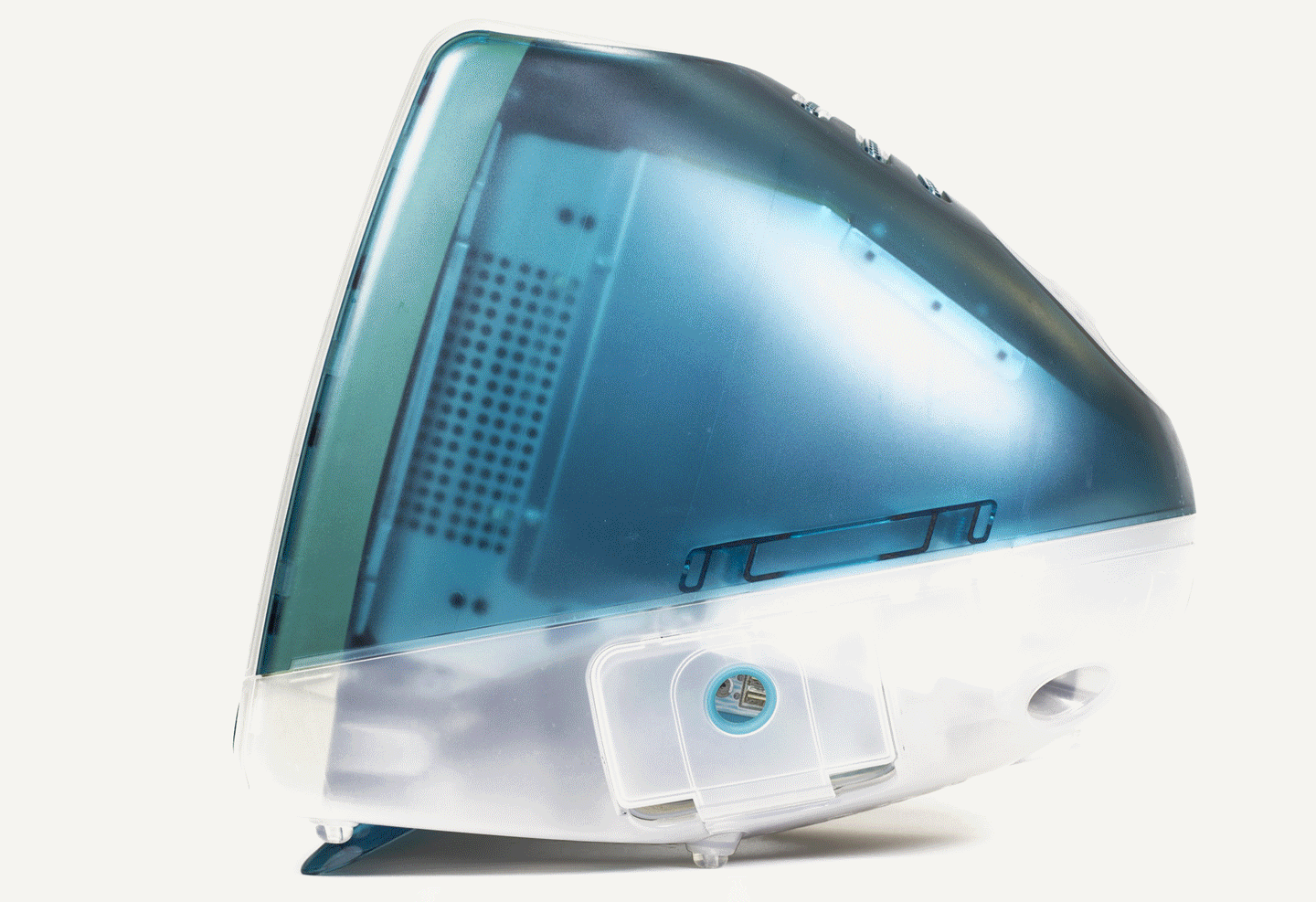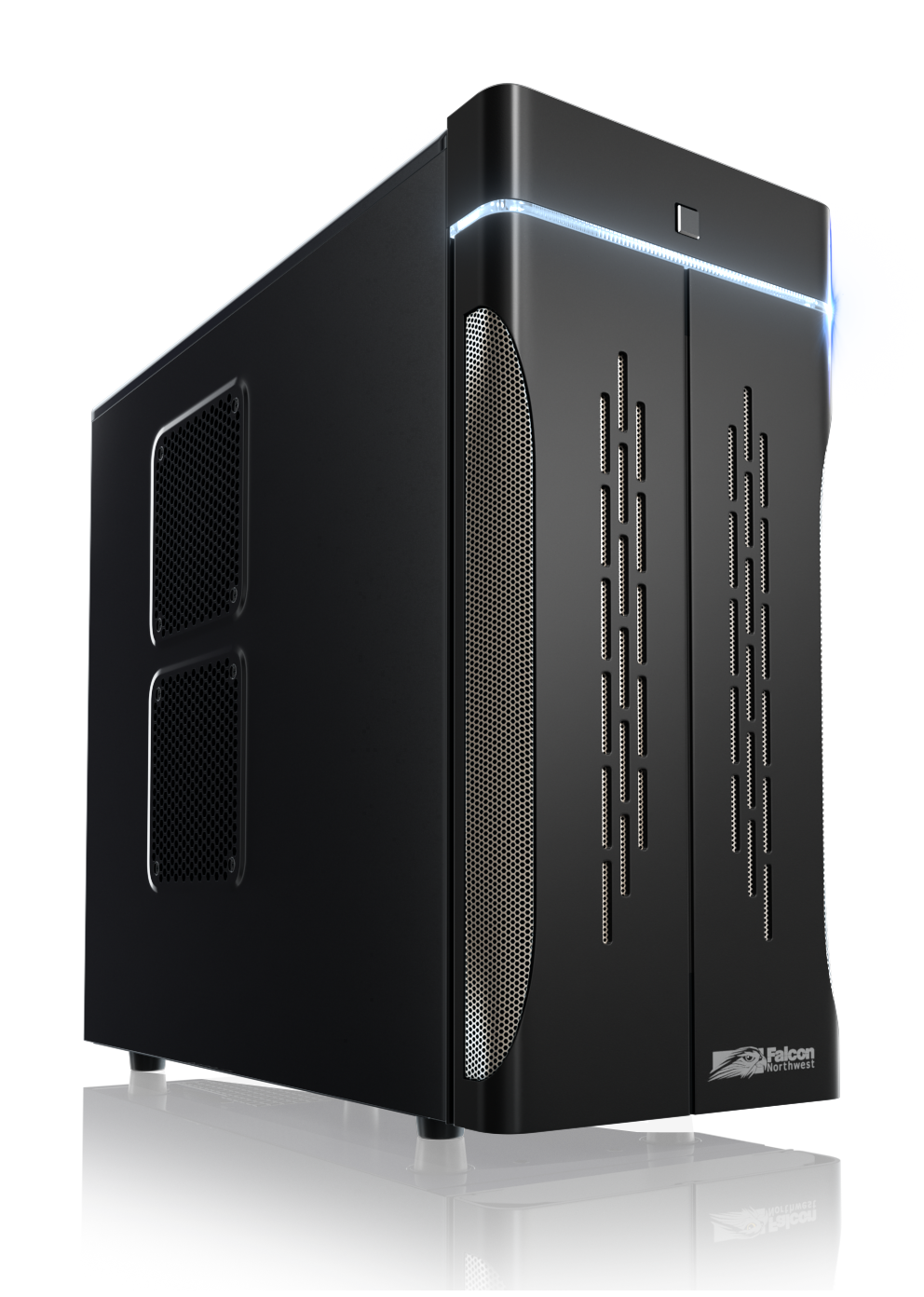|
Power Macintosh 5400
The Power Macintosh 5400 (also sold under variations of the name Performa 5400) is a personal computer designed, manufactured and sold by Apple Computer from April 1996 to March 1998. The 5400 is an all-in-one computer with an integrated monitor, and replaced the Power Macintosh 5200 LC in that role. It is largely identical to the Power Macintosh 6400 internally, which is essentially the same computer (the "Alchemy" platform) in a tower case. This is the first all-in-one Macintosh to support PCI expansion, replacing the Processor Direct Slot. Unlike other Power Macintosh machines of the time, the 5400 was only sold to education markets. Macintosh Performa-branded variants were generally only sold in Europe, Asia and Australia while the less-powerful Performa 5300CD remained on sale in the Americas for much of 1996. This reflected a de-emphasizing of sales of all-in-one form factor computers into the consumer market, something Apple stopped doing altogether until the intro ... [...More Info...] [...Related Items...] OR: [Wikipedia] [Google] [Baidu] |
Power Macintosh
The Power Macintosh, later Power Mac, is a family of personal computers designed, manufactured, and sold by Apple Computer as the core of the Macintosh brand from March 1994 until August 2006. Described by ''MacWorld'' as "the most important technical evolution of the Macintosh since the Mac II debuted in 1987", it is the first computer with the PowerPC CPU architecture, the flagship product of the AIM alliance. Existing software for the Motorola 68k processors of previous Macintoshes do not run on it natively, so a Mac 68k emulator is in System 7.1.2. It provides good compatibility, at about two thirds of the speed of contemporary Macintosh Quadra machines. The Power Macintosh replaced the Quadra, and was initially sold in the same enclosures. Over the next twelve years, it evolved through a succession of enclosure designs, a rename to "Power Mac", five major generations of PowerPC chips, and a great deal of press coverage, design accolades, and controversy about performance ... [...More Info...] [...Related Items...] OR: [Wikipedia] [Google] [Baidu] |
All-in-one PC
An all-in-one computer or all-in-one PC (AIO) is a personal computer that integrates the system's internal components into the same case as the display, thus occupying a smaller footprint (with fewer cables) than desktops that incorporate a tower. Advantages and disadvantages Some advantages of the all-in-one computer compared to other form factors include being easier to set up, a reduced physical footprint, ease of transportation, and the option to interface with the computer via touchscreen (a now-common fixture on all-in-ones). Some disadvantages include generally being more expensive than desktop computers, a lack of customizability—most of the internal hardware such as the RAM and the SSD, especially in post-late-2010s machines, is soldered onto the system board—a lack of upgrade paths for the CPU, RAM, and technology of the display, and the difficulty of repair. History This form factor was popular during the early 1980s for personal computers intended for profession ... [...More Info...] [...Related Items...] OR: [Wikipedia] [Google] [Baidu] |
PowerPC Macintosh Computers
PowerPC (with the backronym Performance Optimization With Enhanced RISC – Performance Computing, sometimes abbreviated as PPC) is a reduced instruction set computer (RISC) instruction set architecture (ISA) created by the 1991 Apple– IBM–Motorola alliance, known as AIM. PowerPC, as an evolving instruction set, has been named Power ISA since 2006, while the old name lives on as a trademark for some implementations of Power Architecture–based processors. PowerPC was the cornerstone of AIM's PReP and Common Hardware Reference Platform (CHRP) initiatives in the 1990s. Originally intended for personal computers, the architecture is well known for being used by Apple's Power Macintosh, PowerBook, iMac, iBook, eMac, Mac Mini, and Xserve lines from 1994 until 2005, when Mac transition to Intel processors, Apple migrated to Intel's x86. It has since become a niche in personal computers, but remains popular for embedded system, embedded and high-performance processors. Its use ... [...More Info...] [...Related Items...] OR: [Wikipedia] [Google] [Baidu] |
IMac G3
The iMac G3, originally released as the iMac, is a series of Macintosh personal computers sold by Apple Computer from 1998 to 2003. The iMac was the first major new product release for Apple under Steve Jobs, Apple's interim CEO and cofounder, who returned to the financially troubled company in 1996 after eleven years away. Jobs reorganized the company and simplified the product line; the iMac was designed to be Apple's new consumer desktop product, a cheaper computer for average consumers that would easily connect to the internet. Head of design Jony Ive and his team developed a teardrop-shaped, translucent plastic case for the iMac, a radical departure from the look of previous personal computers. They developed new work methodologies to finish the computer in an accelerated timeframe, and created new workflows they would use for designing products going forward. The iMac eschewed legacy technologies like serial ports and floppy disk drives for CD-ROMs and USB ports. Whil ... [...More Info...] [...Related Items...] OR: [Wikipedia] [Google] [Baidu] |
Power Macintosh 5300
The Power Macintosh 5200 LC and Power Macintosh 5300 LC were a line of personal computers that are a part of Apple Computer's Power Macintosh, LC, and Performa families of Macintosh computers. When sold to the consumer market, the machines were marketed as variations of Performa 5200 and Performa 5300. The Power Macintosh 5200 LC was introduced in April 1995 with a PowerPC 603 CPU at 75 MHz as a PowerPC-based replacement of the Macintosh LC 500 series. Later models switched to the PowerPC 603e CPU and used model numbers above 5300, but kept the same motherboard design. Unlike previous education models, which prepended the model number with "LC", the 5200 / 5300 models use the Power Macintosh designation of Apple's main workstation line of the time, with "LC" appended to the end. The 5200 is closely related to the 6200, which use the same logic boards in desktop cases without integrated monitors. In an editorial, MacWorld Magazine's Editor-In-Chief, Adrian Mello, wr ... [...More Info...] [...Related Items...] OR: [Wikipedia] [Google] [Baidu] |
Processor Direct Slot
A processor direct slot (PDS) is a slot incorporated into many older Macintosh models that allowed direct access to the signal pins of a CPU, similar to the functionality of a local bus in PCs. This would result in much higher speeds than having to go through a bus layer, such as NuBus, which typically ran at a slower 10 MHz speed. Overview Typically, a machine would feature multiple bus expansions slots, if any. However, there was never more than one PDS slot. Rather than providing a sophisticated communication protocol with ''arbitration'' between different bits of hardware that might be trying to use the communication channel at the same time, the PDS slot, for the most part, just gave direct access to signal pins on the CPU, making it closer in nature to a local bus. Thus, PDS slots tended to be CPU-specific, and therefore a card designed for the PDS slot in the Motorola 68030-based Macintosh SE/30, for example, would not work in the Motorola 68040-based Quadra 700. ... [...More Info...] [...Related Items...] OR: [Wikipedia] [Google] [Baidu] |
Conventional PCI
Peripheral Component Interconnect (PCI) is a local computer bus for attaching hardware devices in a computer and is part of the PCI Local Bus standard. The PCI bus supports the functions found on a processor bus but in a standardized format that is independent of any given processor's native bus. Devices connected to the PCI bus appear to a bus master to be connected directly to its own bus and are assigned addresses in the processor's address space. It is a parallel bus, synchronous to a single bus clock. Attached devices can take either the form of an integrated circuit fitted onto the motherboard (called a ''planar device'' in the PCI specification) or an expansion card that fits into a slot. The PCI Local Bus was first implemented in IBM PC compatibles, where it displaced the combination of several slow Industry Standard Architecture (ISA) slots and one fast VESA Local Bus (VLB) slot as the bus configuration. It has subsequently been adopted for other computer types. Ty ... [...More Info...] [...Related Items...] OR: [Wikipedia] [Google] [Baidu] |
Computer Tower
In personal computing, a tower is a form of desktop computer whose case height is much greater than its width, thus having the appearance of an upstanding tower block, as opposed to a traditional desktop or "pizza box" computer whose width is greater than its height and appears lying flat. Although a tower case may be placed on top of the desk alongside the monitor and other peripherals, a far more common configuration is to place the case on the floor below the desk or in an under-desk compartment, in order to save desktop space for other items. Multiple subclasses of the tower form factor have been established to differentiate their varying heights, including full-tower, mid-tower, midi-tower and mini-tower; these classifications are nebulously defined and inconsistently applied by different manufacturers, however. Computer systems housed in the horizontal form factor—once popularized by the IBM PC in the 1980s but fallen out of mass use since the 1990s—have been given ... [...More Info...] [...Related Items...] OR: [Wikipedia] [Google] [Baidu] |
Power Macintosh 6400
The Power Macintosh 6400 (also sold under variations of the name Performa 6400) is a personal computer designed, manufactured and sold by Apple Computer from August 1996 to August 1997. It is the only Macintosh mini-tower system to be branded as a Performa, and alongside the Performa 6360 was the last new Performa-branded model introduced by Apple. The 6400 and its Performa variants were discontinued in favor of the uniformly-named Power Macintosh 6500 in August 1997. Hardware Logic board: The logic board, code-named "Alchemy", is shared with the Power Macintosh 5400 all-in-one and Performa 6360 desktop models. Alchemy is generally believed to be superior to its 5200/6200 predecessors since it had a 64-bit data path to main memory. CPU: All 6400 models use a PowerPC 603ev processor that is soldered to the computer's logic board and cooled by a fanless heat-sink. Though initially considered non-upgradable, CPU upgrades did come to market that overrode the fixed CPU by use o ... [...More Info...] [...Related Items...] OR: [Wikipedia] [Google] [Baidu] |
Personal Computer
A personal computer (PC) is a multi-purpose microcomputer whose size, capabilities, and price make it feasible for individual use. Personal computers are intended to be operated directly by an end user, rather than by a computer expert or technician. Unlike large, costly minicomputers and mainframes, time-sharing by many people at the same time is not used with personal computers. Primarily in the late 1970s and 1980s, the term home computer was also used. Institutional or corporate computer owners in the 1960s had to write their own programs to do any useful work with the machines. While personal computer users may develop their own applications, usually these systems run commercial software, free-of-charge software (" freeware"), which is most often proprietary, or free and open-source software, which is provided in "ready-to-run", or binary, form. Software for personal computers is typically developed and distributed independently from the hardware or operating system ... [...More Info...] [...Related Items...] OR: [Wikipedia] [Google] [Baidu] |
Macintosh Performa
The Macintosh Performa is a family of personal computers designed, manufactured and sold by Apple Computer, Inc. from 1992 to 1997. The Performa brand re-used models from Apple's Quadra, Centris, LC, and Power Macintosh families with model numbers that denoted included software packages or hard drive sizes. Whereas non-Performa Macintosh computers were sold by Apple Authorized Resellers, the Performa was sold through big-box stores and mass-market retailers such as Good Guys, Circuit City, and Sears. The initial series of models consisted of the Macintosh Classic II-based Performa 200, the LC II-based Performa 400, and the IIvi-based Performa 600. After releasing a total of sixty-four different models, Apple retired the Performa brand in early 1997, shortly after release of the Power Macintosh 5500, 6500, 8600 and 9600, as well as the return of Steve Jobs to the company. The Performa brand's lifespan coincided with a period of significant financial turmoil at Apple ... [...More Info...] [...Related Items...] OR: [Wikipedia] [Google] [Baidu] |
Power Macintosh 5500
The Power Macintosh 5500 is a personal computer designed, manufactured, and sold by Apple Computer from February 1997 to March 1998. Like the Power Macintosh 5260 and 5400 that preceded it, the 5500 is an all-in-one design, built around a PowerPC 603ev processor operating at 225, 250 or 275 megahertz (MHz). Apple originally produced the Power Macintosh 5500 for the educational market as a replacement for the previous year's Power Macintosh 5400. It is the last All-In-One from Apple to be housed in the Power Macintosh 5200 LC's form-factor; its replacement, the Power Macintosh G3 All-In-One, introduced a significantly different design. Hardware The 225 and 250 MHz models were produced in beige and black, whilst the rarer 275 MHz models were only black. External ports: External ports include two LocalTalk/GeoPort serial ports, a DB-25 SCSI port, an ADB port, a stereo sound input port, a built-in microphone above the monitor, stereophonic sound output ports, ... [...More Info...] [...Related Items...] OR: [Wikipedia] [Google] [Baidu] |






